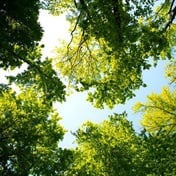Amid the highest recorded pollen counts in history, Health24 will be bringing you exclusive pollen count updates courtesy of the UCT Lung Institute's Allergy and Immunology Unit.
Here are the major city updates for 25 June:
Cape Town (Western Cape)
Grass and tree levels were very low. Gum was detected and winter-flowering cypress trees are beginning their pollen release cycle. Weed levels were low, but with more variation as erica, Stoebe (slangbos an indigenous shrub) the daisy family and waxberry, a large shrub were identified. Mould levels increased to moderate levels when sun followed rain and the 'wet weather spore' Pleospora increased.
Count: 5 (low)
Johannesburg (Gauteng)
Grass counts were low during this sampling week. Tree levels were also low and included cypress, lime and gum. Weed levels were low and goosefoot, the daisy family and ferns were detected. Mould levels were consistently low.
Count: 8 (moderate)
Pretoria (Gauteng)
Pollen levels were very low. Grasses were scanty. Low tree levels included birch, bushwillow and Searsia (Rhus) Weeds were also low and included the daisy family, the pink or carnation family, goosefoot and Euphorbia. Moulds were very low.
Count: 2 (low)
Bloemfontein (Orange Free State)
Grass, tree and weed levels were low. Tree types included Buddleja, willow and Searsia (formerly Rhus) and weeds included Stoebe (slangbos, an indigenous shrub) and the daisy family. Mould levels were uniformly low.
Count: 3 (low)
Kimberley (Northern Cape)
No data available due to the Covid-19 crisis.
Durban (KZN)
Low grass levels were detected. Trees were very low and only pine and Searsia (rhus) were observed. Low weed levels included ferns, the daisy family, sorrel, Cannabis, mistletoe and Stoebe (slangbos, an indigenous shrub).
Count: 2 (very low)
Port Elizabeth (Eastern Cape)
Grass, tree and weed levels were all low. Trees included the types Casuarina, gum and waxberry. Weeds or shrubs detected were the daisy family and reeds. Moulds were consistently low.
Count: 3 (low)
See the full report HERE.
Reference ranges:
Overall, Trees, Grasses and Weeds all use the same values (grains per cubic metres of air).
Overall count is the daily average of pollen grains per cubic metres of air (trees plus grasses plus weeds).
In partnership with the UCT Lung Institute's Allergy and Immunology Unit.
As the pollen problem worsens, precise and expanded monitoring becomes even more essential. And here's how you can help.
* Please note weekly pollen counts will be disrupted during the national lockdown and will intermittently be made available. We apologise for the inconvenience.
WATCH | Is it the flu, allergies or the new coronavirus? Here’s how to tell the difference
WATCH | Can being 'too clean' cause allergies?
WATCH | Behind the scenes: How spore traps in SA are used to determine the pollen count
Image: Getty




 Publications
Publications
 Partners
Partners











